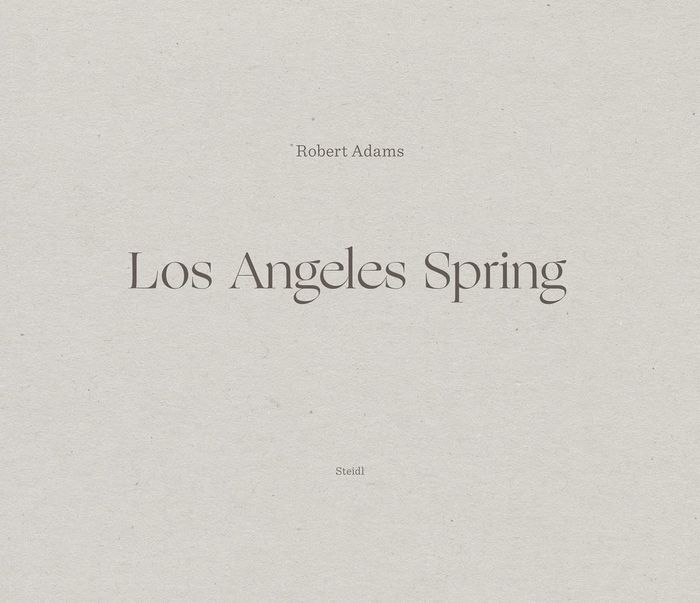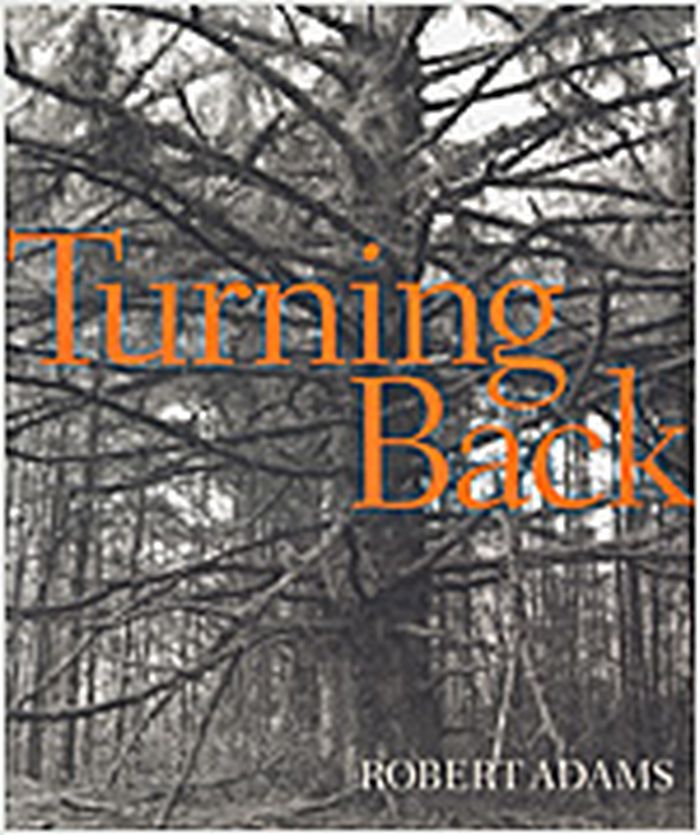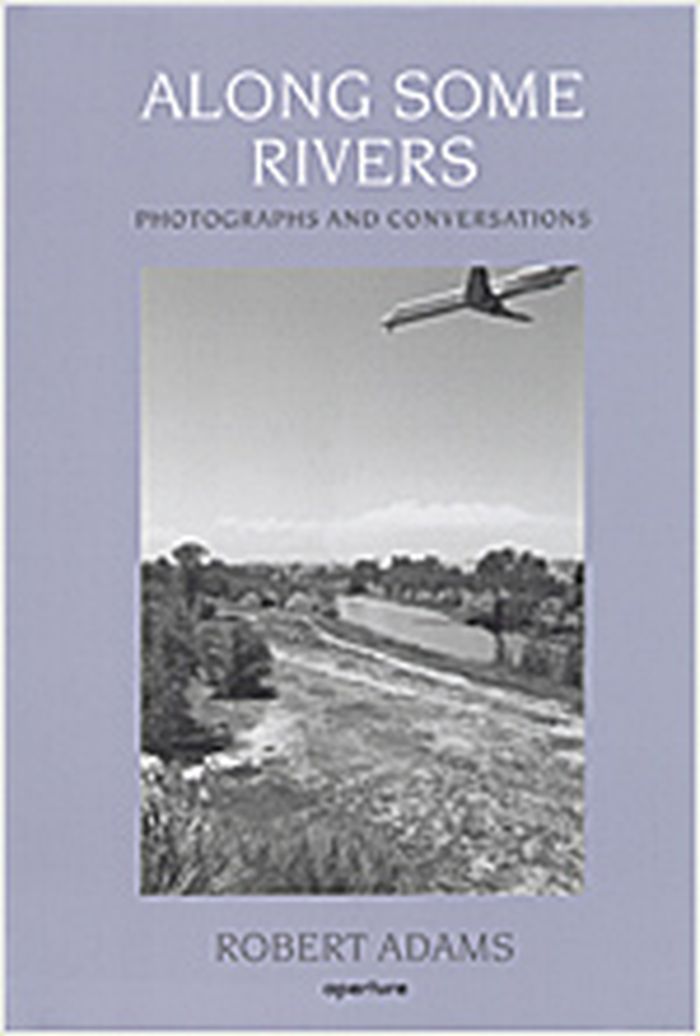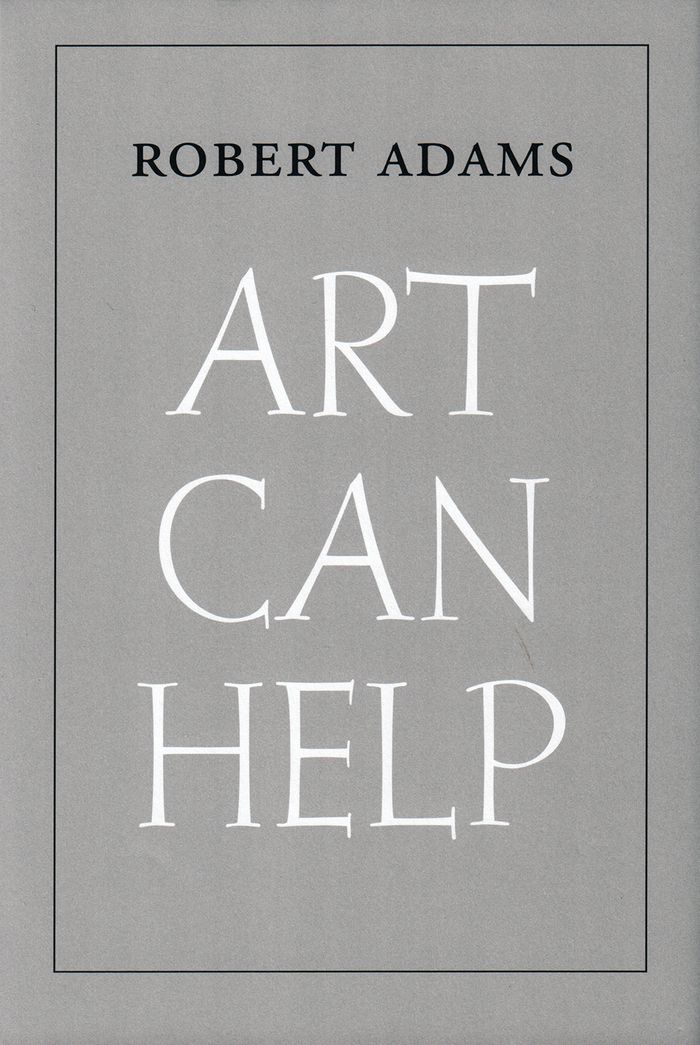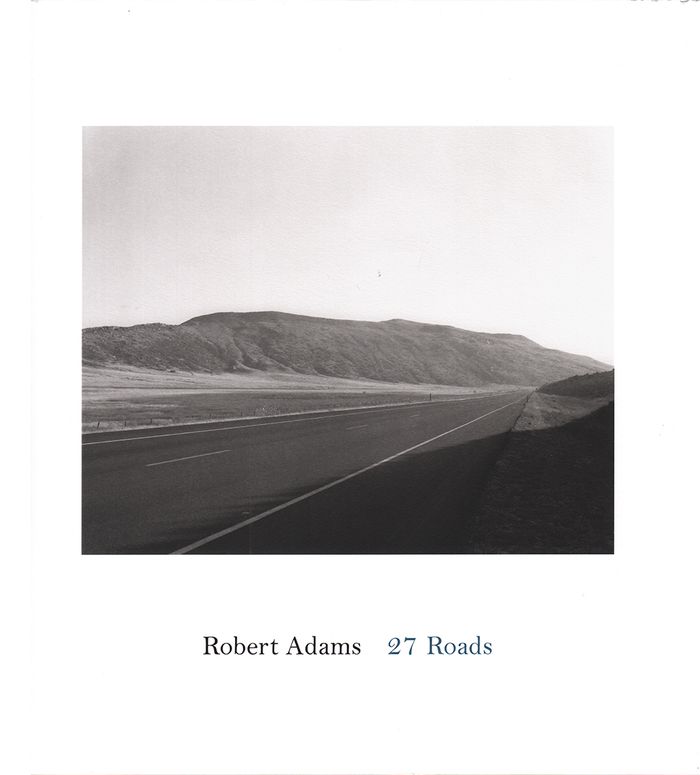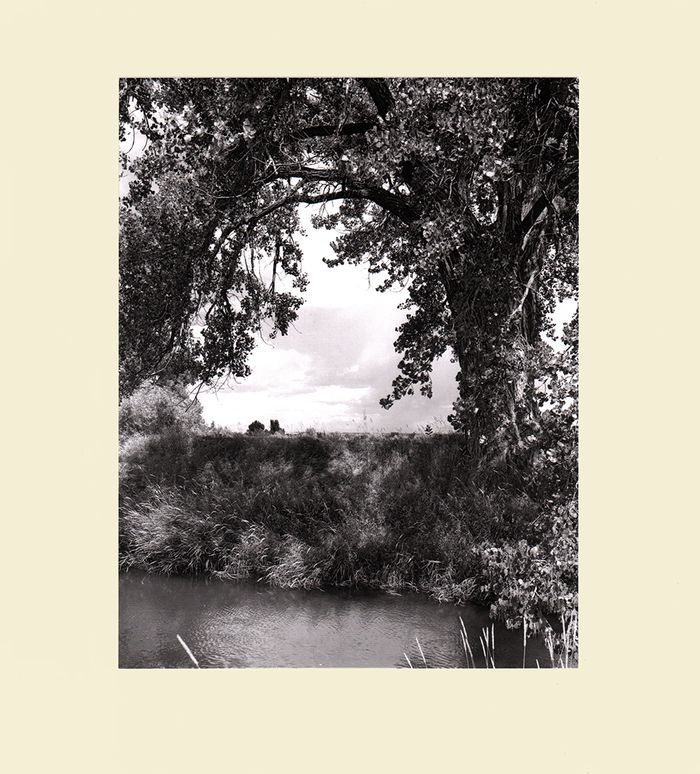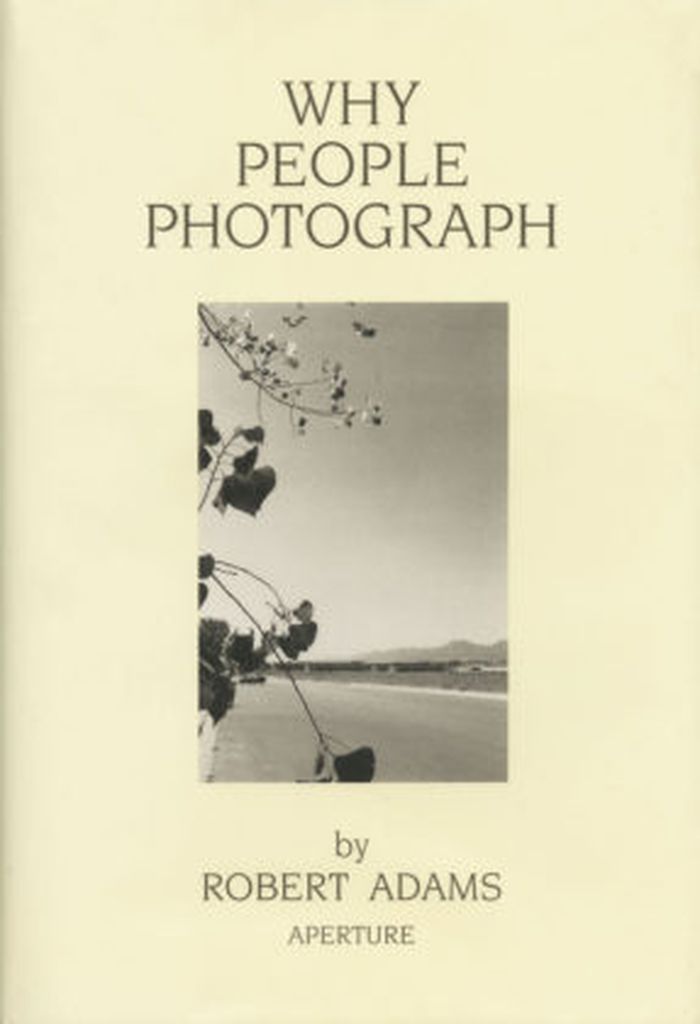$215.00
(available to order)
Summary:
Having lived in Southern California during his university years, Robert Adams returned to photograph the Los Angeles Basin in the late 1970s and early 1980s, concentrating on what was left of the citrus groves, eucalyptus and palm trees that once flourished in the area. The pictures, while foreboding, testify to a verdancy against the odds. Featuring sumptuous quadratone(...)
Robert Adams: Los Angeles spring
Actions:
Price:
$215.00
(available to order)
Summary:
Having lived in Southern California during his university years, Robert Adams returned to photograph the Los Angeles Basin in the late 1970s and early 1980s, concentrating on what was left of the citrus groves, eucalyptus and palm trees that once flourished in the area. The pictures, while foreboding, testify to a verdancy against the odds. Featuring sumptuous quadratone plates, this greatly expanded and revised edition of a title originally published in 1986 reinvigorates one of Adams’ most influential and admired bodies of work.
Photography monographs
Robert Adams : turning back
$56.95
(available to order)
Summary:
"Turning back: a photographic journal of re-exploration" is published to coincide with the bicentennial of the Lewis and Clark expedition. The narrative begins at the Pacific ocean and moves eastward through what was formerly one of the world’s great rain forests. Photographs at the center of the book report on the forest’s destruction. Elsewhere they trace a search for(...)
Robert Adams : turning back
Actions:
Price:
$56.95
(available to order)
Summary:
"Turning back: a photographic journal of re-exploration" is published to coincide with the bicentennial of the Lewis and Clark expedition. The narrative begins at the Pacific ocean and moves eastward through what was formerly one of the world’s great rain forests. Photographs at the center of the book report on the forest’s destruction. Elsewhere they trace a search for hope. Two hundred years ago, Lewis and Clark reported finding in the American Northwest a vast forest of ancient evergreens. In "Turning back", Robert Adams looks again at the region’s trees, discovering evidence both of America’s failure and of a continuing promise. President Jefferson’s primary charge to Lewis and Clark was to prepare the way for American commerce. Today, historians still speculate about why, upon his return, Lewis lapsed into depression and apparently committed suicide. "Going east," Adams suggests, "was more difficult than going west." So then, what is the future? "Turning back" documents two kinds of predictive evidence. On the one hand we observe the results of greed so unrestrained that they are indistinguishable from those of nihilism. On the other we see what still lives, whether by our design or neglect, or Providence; in these 164 pictures the tone is celebratory, as in a prayer book. From coastal landscapes populated with tourists to timber clear-cutting and small family farms in eastern Oregon, here we reflect on what was lost, what is retained, and what we value both regionally and as a people with a common history.
Photography monographs
$84.95
(available to order)
Summary:
Cyril Connolly wrote that 'no city should be too large for a man (or woman) to walt out of in a morning.'It is a sensible standard, though by it the Denver area in the 1970's was a disappointment. People had moved there to enjoy nature, but found that nature was mostly inacessible except on weekends. Often little of it was even visible out the window. The puzzle became(...)
Robert Adams Interiors 1973-1974
Actions:
Price:
$84.95
(available to order)
Summary:
Cyril Connolly wrote that 'no city should be too large for a man (or woman) to walt out of in a morning.'It is a sensible standard, though by it the Denver area in the 1970's was a disappointment. People had moved there to enjoy nature, but found that nature was mostly inacessible except on weekends. Often little of it was even visible out the window. The puzzle became how to live inside. These rooms seemed to me then to be mostly sad , although what strikee me now is the evidence in them, however fragile, of caring.
Photography monographs
$30.00
(available to order)
Summary:
Robert Adams, one of America’s foremost living photographers, has spent decades considering and documenting the landscape of the American West and how it has been altered, disturbed, or destroyed by the hand of man. A professor of English before turning to photography, Adams is also a skilled writer and acute thinker on aesthetic questions. A collection of conversations(...)
Along some rivers : photographs and conversations
Actions:
Price:
$30.00
(available to order)
Summary:
Robert Adams, one of America’s foremost living photographers, has spent decades considering and documenting the landscape of the American West and how it has been altered, disturbed, or destroyed by the hand of man. A professor of English before turning to photography, Adams is also a skilled writer and acute thinker on aesthetic questions. A collection of conversations (some previously unpublished) with writers and curators—William McEwan, Constance Sullivan, and Thomas Weski, among others (including a group of his students) offers the artist’s thoughts on a number of his now legendary projects, including "Cottonwoods" and "What we bought". This publication includes a selection of twenty-eight unpublished landscapes. Foreword by Richard B. Woodward.
Photography monographs
Anthony Hernandez
$64.95
(available to order)
Summary:
Since the early 1970s, when he began photographing on the streets of his native Los Angeles, Anthony Hernandez has consistently pushed his practice into uncharted territory, challenging himself by adopting new formats and subject matter. Moving from black and white to color, from 35mm to large-format cameras, and from the human figure to landscapes to abstracted detail,(...)
Anthony Hernandez
Actions:
Price:
$64.95
(available to order)
Summary:
Since the early 1970s, when he began photographing on the streets of his native Los Angeles, Anthony Hernandez has consistently pushed his practice into uncharted territory, challenging himself by adopting new formats and subject matter. Moving from black and white to color, from 35mm to large-format cameras, and from the human figure to landscapes to abstracted detail, he has produced an unusually varied body of work united by its arresting beauty and subtle engagement with social issues. At first largely unaware of the formal traditions of the medium, Hernandez developed his own style of street photography, one uniquely attuned to the desolate allure and sprawling expanses of LA. Published to accompany the photographer’s first retrospective, Anthony Hernandez offers a comprehensive introduction to his career of more than 40 years, tracing his evolution as well as highlighting continuities across his practice. The catalogue represents the full range and breadth of Hernandez’s work, with an extensive plate section that includes many photographs that have never before been exhibited or published.
Photography monographs
$85.00
(available to order)
Summary:
American Silence: The Photographs of Robert Adams examines Adams’s reverential act of looking at the world around him and the almost palpable silence of his photographs. It includes works that capture the sense of peace and harmony that the beauty of nature can instill in us, created through what Adams calls “the silence of light” of the American West (as seen on the(...)
American silence: The photographs of Robert Adams
Actions:
Price:
$85.00
(available to order)
Summary:
American Silence: The Photographs of Robert Adams examines Adams’s reverential act of looking at the world around him and the almost palpable silence of his photographs. It includes works that capture the sense of peace and harmony that the beauty of nature can instill in us, created through what Adams calls “the silence of light” of the American West (as seen on the prairie, in the woods, and by the ocean), as well as pictures that question our moral silence to the desecration of that beauty by consumerism, industrialization, and lack of environmental stewardship. The book features some 175 works from Adams’s most important projects and includes pictures of suburban sprawl, strip malls, highways, homes, and stores, as well as rivers and skies, the prairie and the ocean. While Adams’s photographs lament the ravages that have been inflicted on the land, they also pay homage to what remains.
Photography monographs
$33.95
(available to order)
Summary:
In "Art Can Help", the internationally acclaimed American photographer Robert Adams offers over two dozen meditations on the purpose of art and the responsibility of the artist. In particular, Adams advocates art that evokes beauty without irony or sentimentality, art that “encourages us to gratitude and engagement, and is of both personal and civic consequence.”(...)
Art can help : new and selected essays
Actions:
Price:
$33.95
(available to order)
Summary:
In "Art Can Help", the internationally acclaimed American photographer Robert Adams offers over two dozen meditations on the purpose of art and the responsibility of the artist. In particular, Adams advocates art that evokes beauty without irony or sentimentality, art that “encourages us to gratitude and engagement, and is of both personal and civic consequence.” Following an introduction, the book begins with two short essays on the works of the American painter Edward Hopper, an artist venerated by Adams. The rest of this compilation contains texts—more than half of which have never before been published—that contemplate one or two works by an individual artist. The pictures discussed are by noted photographers such as Julia Margaret Cameron, Emmet Gowin, Dorothea Lange, Abelardo Morell, Edward Ranney, Judith Joy Ross, John Szarkowski, and Garry Winogrand. Several essays summon the words of literary figures, including Virginia Woolf and Czeslaw Milosz. Adams’s voice is at once intimate and accessible, and is imbued with the accumulated wisdom of a long career devoted to making and viewing art. This eloquent and moving book champions art that fights against disillusionment and despair.
Art Theory
Robert Adams: 27 roads
$87.00
(available to order)
Summary:
The road has been a central motif in the work of Robert Adams (born 1937) since the beginnings of his life as a photographer in the late 1960s. 27 Roads is the first publication to focus on this important aspect of his work, and is comprised of the artist's concise, poetic selection of images spanning almost five decades. Whether fast concrete highways, quiet cuts through(...)
Robert Adams: 27 roads
Actions:
Price:
$87.00
(available to order)
Summary:
The road has been a central motif in the work of Robert Adams (born 1937) since the beginnings of his life as a photographer in the late 1960s. 27 Roads is the first publication to focus on this important aspect of his work, and is comprised of the artist's concise, poetic selection of images spanning almost five decades. Whether fast concrete highways, quiet cuts through dark forests, paved commercial strips or dusty tracks on a clear-cut mountainside, Adams' roads function as metaphors for solitude, connection or freedom. Adams writes, "Roads can still be beautiful. Occasionally they appear like a perfect knife slicing through a perfect apple, the better to show that two halves are one."
Photography monographs
Robert Adams: Cottonwoods
$67.50
(available to order)
Summary:
Trees have been a subject of lifelong engagement for acclaimed American photographer Robert Adams (born 1937), and no species has enthralled him more than the cottonwood. Revered by the Plains Indians, native cottonwoods animate the landscape unforgettably but their thirst for water and lack of commercial value have made them common targets for removal by agricultural(...)
Photography monographs
April 2018
Robert Adams: Cottonwoods
Actions:
Price:
$67.50
(available to order)
Summary:
Trees have been a subject of lifelong engagement for acclaimed American photographer Robert Adams (born 1937), and no species has enthralled him more than the cottonwood. Revered by the Plains Indians, native cottonwoods animate the landscape unforgettably but their thirst for water and lack of commercial value have made them common targets for removal by agricultural business and housing developers. Some of Adams’ earliest pictures were of cottonwoods, and he photographed them throughout the 35 years that he lived in Colorado, beginning in 1975. Each of the black-and-white photos in the series was taken within a 50-mile radius of his home in Colorado. Originally published by the Smithsonian in 1994, this new edition of Cottonwoods has been expanded and enlarged to include an interview with Adams by Constance Sullivan.
Photography monographs
$23.95
(available to order)
Summary:
A now classic text on the art, Why People Photograph gathers a selection of essays by the great master photographer Robert Adams, tackling such diverse subjects as collectors, humor, teaching, money and dogs. Adams also writes brilliantly on Edward Weston, Paul Strand, Laura Gilpin, Judith Joy Ross,
Why people photograph: selected essays and reviews
Actions:
Price:
$23.95
(available to order)
Summary:
A now classic text on the art, Why People Photograph gathers a selection of essays by the great master photographer Robert Adams, tackling such diverse subjects as collectors, humor, teaching, money and dogs. Adams also writes brilliantly on Edward Weston, Paul Strand, Laura Gilpin, Judith Joy Ross,
Theory of Photography
